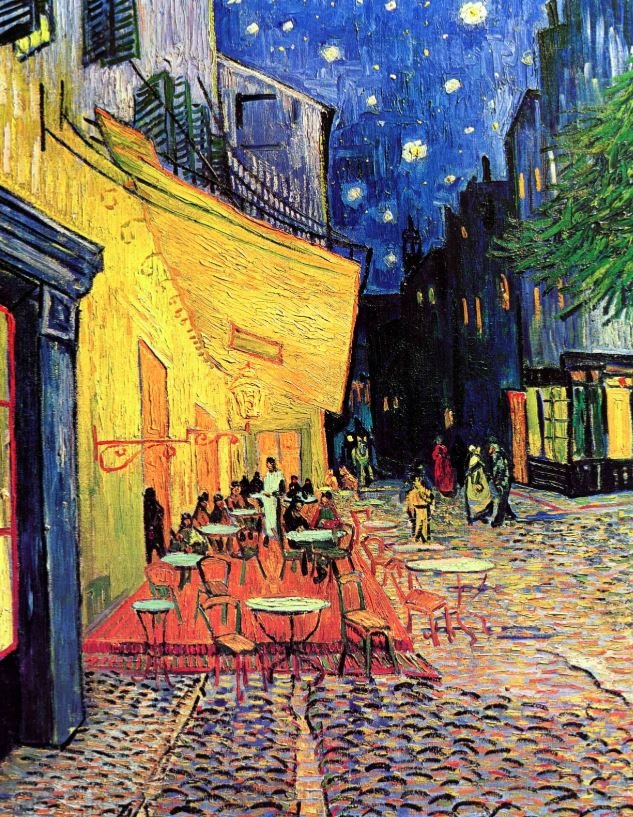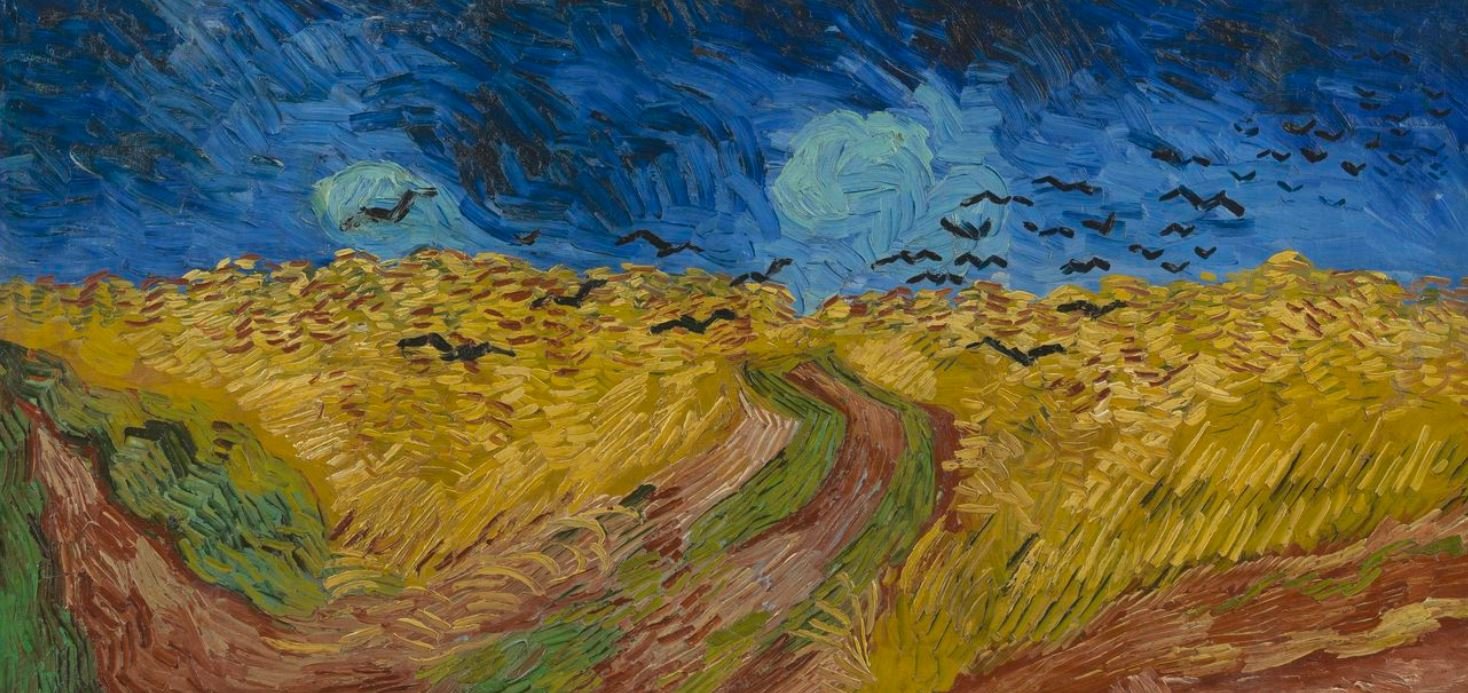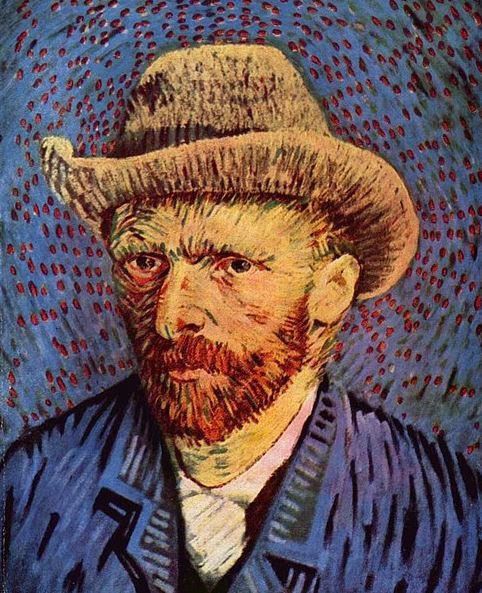Top 15 most famous paintings by Vincent van Gogh
Vincent van Gogh is an iconic figure in the art world who left an extraordinary legacy through his awe-inspiring paintings. Known for his post-impressionistic style and emotional intensity, Van Gogh’s works continue to captivate audiences around the globe. This article takes you on a journey through his 15 most famous paintings, offering insights into their significance, locations, and key details.
Here are the top 15 most famous paintings by Vincent van Gogh:
1. Starry Night, 1889
Starry Night, 1889
Starry Night (1889) is a masterpiece by Vincent van Gogh, it is widely regarded as one of his most famous and influential works. Van Gogh painted Starry Night during his stay at the Saint-Paul-de-Mausole asylum in Saint-Rémy-de-Provence, France.
This iconic painting portrays a dreamlike scene of a night sky filled with swirling stars and a crescent moon, juxtaposed against a small village and rolling hills. Van Gogh’s use of bold brushwork and vivid colours creates a sense of movement and emotional intensity. Starry Night is a powerful representation of the artist’s unique perspective and his profound connection to nature and the universe. It continues to captivate viewers, inviting them to experience the ethereal beauty and the depth of van Gogh’s artistic vision.
Starry Night is on display in New York at The Museum of Modern Art (MoMA).
2. Sunflowers, 1888
Sunflowers, 1888
Sunflowers (1888) is an iconic series of paintings by Vincent van Gogh that has become synonymous with his name. Van Gogh painted these sunflowers during his time in Arles, France, where he hoped to establish an artist community.
These vibrant and expressive works capture the beauty and energy of sunflowers in various stages of bloom. Van Gogh’s use of bold, vibrant yellows and textured brushstrokes brings the flowers to life on the canvas, evoking a sense of vitality and joy. The series reflects Van Gogh’s fascination with nature and his belief in the spiritual power of art. Sunflowers is a testament to Van Gogh’s unique artistic vision and his ability to infuse his subjects with deep emotion and symbolism.
The painting series Sunflowers (1888) by Vincent van Gogh is displayed in various museums around the world, including:
Kunstmuseum Bern
Metropolitan Museum of Art, New York
Sompo Japan Museum of Art, Tokyo
Philadelphia Museum of Art
3. The Bedroom, 1888
The Bedroom, 1888
The Bedroom (1888) is a renowned painting by Vincent van Gogh that depicts his personal living space in Arles, France.
It showcases Van Gogh’s meticulous attention to detail and his ability to infuse ordinary subjects with profound meaning. The composition features a simple, yet vibrant depiction of the artist’s bedroom, characterised by bold colours and expressive brushwork. Through the use of vibrant blue hues, Van Gogh conveys a sense of tranquility and introspection. The Bedroom reflects the artist’s desire for a place of solace and serves as a poignant exploration of the connection between one’s living environment and their inner emotional state.
There are actually three versions of The Bedroom painting; the first is located at the Van Gogh Museum in Amsterdam; the second is at the The Art Institute of Chicago and the third is at the Musée d’Orsay in Paris,
4. Irises, 1889
Irises, 1889
Irises, 1889 is a captivating painting by Vincent van Gogh, showcasing his exceptional talent in capturing the beauty of nature. Irises was created by Vincent van Gogh in 1889, during his stay at the Saint-Paul-de-Mausole asylum in Saint-Rémy-de-Provence, France.
This work features a vibrant bouquet of irises blooming in a garden. Van Gogh’s masterful use of colour, particularly the striking blues and purples, brings the flowers to life on the canvas. The meticulous brushwork and textured surfaces add depth and dimension, enhancing the visual impact of the painting. “Irises” demonstrates Van Gogh’s ability to infuse his subjects with emotion and convey his personal connection to the natural world. It stands as a testament to his artistic brilliance and enduring legacy.
The Irises painting is currently located at the Getty Center, Los Anegeles.
5. Self-Portrait with Straw Hat, 1887
Self-Portrait with Straw Hat, 1887
Self-Portrait with Straw Hat (1887) is a captivating self-portrait by Vincent van Gogh. In this work, Van Gogh portrays himself wearing a straw hat and a thoughtful expression.
The painting showcases his masterful use of colour and brushwork, with bold and expressive strokes that bring depth and texture to the composition. The warm and earthy tones used in the background create a sense of intimacy, allowing viewers to connect with the artist on a more personal level. “Self-Portrait with Straw Hat” is a testament to Van Gogh's introspection and his ability to convey emotion through his self-portraits, inviting us to glimpse into his inner world.
The Self-Portrait with Straw Hat painting is currently located at the The Detroit Institute of Arts.
6. Café Terrace at Night, 1888
Café Terrace at Night, 1888
Café Terrace at Night (1888) is a mesmerising painting by Vincent van Gogh that captures the enchanting atmosphere of a French café in Arles at night.
“Café Terrace at Night” invites us to immerse ourselves in the artist’s vision and experience the magic of an evening in a bustling café. Through his masterful use of vibrant blues and yellows, Van Gogh creates a sense of warmth and an inviting ambiance. The striking contrast between the illuminated café and the darkened street draws viewers into the scene, evoking a feeling of intrigue and nostalgia. This post-impressionist masterpiece showcases Van Gogh’s unique style, and gives a profound connection with his surroundings.
“The Café Terrace at Night” painting is currently located at the Otterlo, Kröller-Müller Museum, The Netherlands.
7. The Potato Eaters, 1885
The Potato Eaters, 1885
The Potato Eaters (1885) is an early work of Van Gogh’s and is one of his most well-known, showcasing his interest in portraying the lives of peasants and the rural working class.
Depicting a group of peasants gathered around a humble table, this painting embodies Van Gogh’s early exploration of realism. The muted colour palette and sombre atmosphere convey the hardships and poverty experienced by rural labourers. Through meticulous attention to detail, Van Gogh captures the gritty textures and worn expressions of his subjects, emphasising their resilience and dignity. “The Potato Eaters” serves as poignant social commentary on the human condition, reflecting Van Gogh’s empathetic perspective and his commitment to portraying the realities of everyday life with unflinching honesty.
“The Potato Eaters” is currently on display at the Otterlo, Kröller-Müller Museum, with another version in the Van Gogh Museum in Amsterdam.
8. The Night Café, 1888
The Night Café, 1888
The Night Café (1888) is a striking painting by Vincent van Gogh that depicts the interior of a café in Arles, France.
Through his use of bold colours and dramatic brushwork, Van Gogh creates an intense and atmospheric scene. The vibrant reds and greens heighten the sense of unease and energy within the space. The distorted perspective adds to the disorienting ambiance, inviting viewers into a world that is simultaneously captivating and unsettling. This painting stands as a powerful representation of Van Gogh’s unique artistic vision and his ability to capture the essence of a place.
“The Night Café” is currently on display at Yale University Art Gallery, Connecticut, United States.
9. Almond Blossoms, 1890
Almond Blossoms, 1890
Almond Blossoms (1890) is a stunning painting by Vincent van Gogh that showcases his skill in capturing the delicate beauty of nature and displays the influences and admiration he had for Japanese art.
Van Gogh painted Almond Blossoms as a gift for his brother Theo and his wife, who had just welcomed their newborn son, Vincent Willem. The painting symbolises new life and hope, as almond blossoms are among the first signs of spring.
This piece features a blossoming almond tree against a clear blue sky. Van Gogh’s use of vibrant, contrasting colours, with the striking white blossoms against the vivid blue, creates a sense of harmony and serenity. The meticulous brushwork and intricate details bring the blossoms to life, radiating a sense of purity and renewal. “Almond Blossoms” is a symbolic representation of new beginnings and hope, reflecting Van Gogh’s own outlook during a time of personal joy at the birth of his nephew and namesake.
“Almond Blossoms” (1890) is currently on display at Van Gogh Museum in Amsterdam.
10. Wheatfield with Crows, 1890
Wheatfield with Crows, 1890
Wheatfield with Crows (1890) is a painting created by Vincent van Gogh in 1890, shortly before his death. It was painted by Vincent van Gogh in the countryside near Auvers-sur-Oise, a village located northwest of Paris, France.
“Wheatfield with Crows” is a powerful and evocative painting by Vincent van Gogh, often considered one of his last works. This composition depicts a vast wheat field with menacing crows hovering overhead. Van Gogh’s use of dark, swirling brushstrokes creates a turbulent and ominous atmosphere. The sombre colour palette conveys a sense of loneliness and melancholy.
“Wheatfield with Crows” is interpreted as a reflection of Van Gogh’s emotional state and his struggle with his mental health. The painting’s symbolic imagery and expressive style have made it an enduring and haunting masterpiece that invites viewers to delve into the depths of the artist’s psyche.
“Wheatfield with Crows” is on display at the Van Gogh Museum in Amsterdam.
11. Portrait of Dr. Gachet, 1890
Portrait of Dr. Gachet, 1890
Portrait of Dr. Gachet (1890) is a poignant and introspective painting by Vincent van Gogh. It is a portrait of Dr. Paul Gachet, who was a physician and amateur artist, as well as one of Van Gogh’s doctors during his time in Auvers-sur-Oise. Dr. Paul Gachet, cared for Van Gogh during his final months.
The painting showcases Van Gogh’s ability to capture the complexities of human emotion and psychological depth. Dr. Gachet’s pensive expression and the thoughtful use of colours convey a sense of melancholy and introspection.
Van Gogh’s textured brushwork adds depth and intensity to the portrait, revealing the inner turmoil experienced by both the artist and his subject. “Portrait of Dr. Gachet” stands as a testament to Van Gogh’s exploration of the human spirit and his ability to convey profound emotion on the canvas.
Portrait of Dr. Gachet is currently located at the Musée d'Orsay in Paris.
12. At Eternity’s Gate, 1890
Sorrowing Old Man (At Eternity’s Gate), 1890
Sorrowing Old Man (At Eternity’s Gate) (1890) is a powerful and introspective painting by Vincent van Gogh. Van Gogh created this artwork during his stay in the Saint-Paul-de-Mausole asylum in Saint-Rémy-de-Provence, France.
The painting depicts an elderly man sitting with his head resting in his hands, conveying a sense of deep sorrow and anguish. The figure is believed to be a self-portrait, representing Van Gogh himself during a period of emotional turmoil.
“Sorrowing Old Man (At Eternity’s Gate)” is currently located at the Kröller-Müller Museum in Otterlo, Netherlands.
13. Road with Cypress and Star, 1890
Road with Cypress and Star, 1890
Road with Cypress and Star (1890) is a captivating painting by Vincent van Gogh that showcases his unique artistic vision. It was created by Vincent van Gogh in 1890, during his time in Auvers-sur-Oise, France.
This composition features a winding road flanked by towering cypress trees, leading the viewer’s gaze towards a radiant star in the night sky. Van Gogh’s use of vibrant and contrasting colours, such as the rich blues and luminous yellows, creates a sense of dynamic energy. The expressive brushwork and swirling patterns add a sense of movement and vitality to the scene. “Road with Cypress and Star” is a symbolic representation of the artist’s spiritual and emotional journey, inviting viewers to contemplate the interconnectedness of nature and the cosmos.
“Road with Cypress and Star” is currently located at the Kröller-Müller Museum in Otterlo, Netherlands.
14. The Sower, 1888
The Sower, 1888
The Sower (1888) is a striking painting by Vincent van Gogh that showcases his mastery in capturing the essence of rural life and the beauty of nature. It was created by Vincent van Gogh in 1890, during his stay in Auvers-sur-Oise, France.
This work depicts a lone figure sowing seeds in a field, symbolising the timeless cycle of growth and renewal. Van Gogh’s use of bold and expressive brushstrokes, along with his vibrant colour palette, brings a sense of dynamism and vitality to the scene. The Sower reflects Van Gogh’s deep appreciation for the working class and his reverence for the profound connection between humans and the natural world. The painting serves as a testament to the artist’s ability to infuse his subjects with emotional depth and capture the essence of the human experience.
The Sower is currently located at the Kröller-Müller Museum in Otterlo, Netherlands.
15. The Red Vineyard, 1888
The Red Vineyard, 1888
The Red Vineyard (1888) holds a significant place in art history as the only painting sold by Vincent van Gogh during his lifetime. He painted “The Red Vineyard” during his time in Arles, France, where he sought to establish an artist community.
It depicts a vibrant vineyard with rich red hues dominating the landscape. Van Gogh’s use of bold brushwork and contrasting colours brings a sense of energy and movement to the composition. This painting exemplifies Van Gogh’s unique style and his ability to capture the essence of nature with expressive intensity. “The Red Vineyard” reflects his fascination with the rural landscapes of the south of France, showcasing his deep connection to the natural world and his desire to convey its beauty through his art.
The painting is currently located at the Pushkin Museum of Fine Arts in Moscow, Russia.
Van Gogh’s paintings are known for their raw honesty, bold colours, and emotive brushstrokes. Despite his lack of commercial success during his lifetime, his legacy lives on, and he is now viewed as one of the most influential artists who helped lay the foundations of modern art.
I have provided more information about where to view Van Gogh paintings in Europe, California, New York, Chicago, Washington D.C. and New England. For more articles about Vincent van Gogh, click here.
I have written other articles about where to view Frida Kahlo artworks and Gustav Klimt artworks, that you may also find interesting.
I hope you have found this blog post about Van Gogh’s most famous artworks useful. I would love to hear your thoughts, please feel free to email me at [email protected].





















